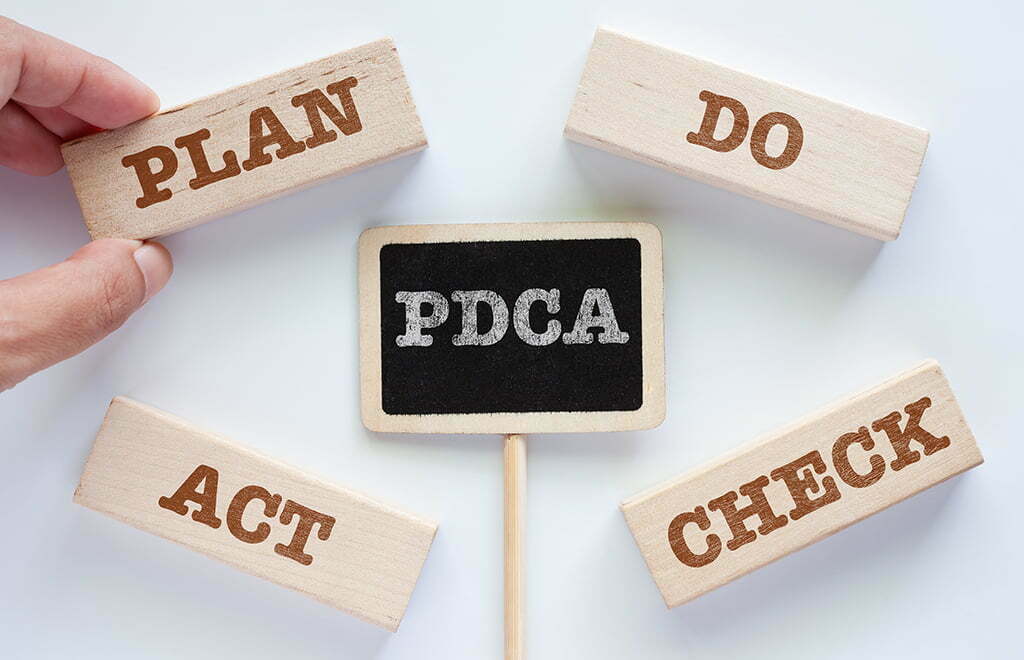Within today’s Quality Management Systems, ‘Continuous Improvement’ is one of the most important principles, especially within the ISO 9001:2015 Quality Management System.
It plays an important part in keeping the organisation competitive, and must be a permanent objective within the organisation.
In reality, history shows that many organisations go out of business simply because they are not able to improve as quickly as their competitors!
So, what is Continuous Improvement? It is defined as “a recurring activity to increase the ability to fulfil requirements.”
Within ISO 9001:2015, its focus is on increasing the ability to fulfil quality requirements. Improvement activities are similar to problem solving activities. The big difference is that improvement activities are planned and usually organised as part of a larger program, whereas problem solving is usually more reactive and unplanned.
WHAT DRIVES CONTINUAL IMPROVEMENT?
Continual improvement is driven by the objectives set by the Senior Management Team.
As a minimum, quality objectives should address:
- The improvement of internal efficiency
- Individual customer requirements
- The level of performance that your market sector expects
There is no requirement that the organisation should set objectives for improvement of all its processes at any one time. It would be unrealistic to expect an organisation to make progress in all potential improvements simultaneously.
Each improvement will require the commitment of resources, which should be prioritised by top management, especially if investment is required.
HOW DO YOU IDENTIFY SOURCES OF IMPROVEMENT OPPORTUNITIES?
Inputs for improvement opportunities are obtained from the following sources:
- Customer satisfaction
- Customer complaints and feedback
- Market research and analysis
- Inputs from employees, suppliers, and other interested parties
- Internal and external audits of the quality system
- Records of product or process non-conformances
- Data from process and product characteristics and their trends
Opportunities for improvement may also be identified on a special project basis. The following are examples of such projects:
- Non-value-added use of floor space
- Excessive inspection/testing
- Excessive handling and storage
- Excessive failures and costs to quality
- Machine set-up changeover times
The majority of organisations with a Quality Management System use some form of the PDCA cycle.
Where:
P – Plan
- Resolve a problem: define, analyse, and identify root cause
- Improve a process: change to create improvement
D – Do
- Resolve a problem: devise a solution
- Improve a process: encourage changes on a small scale to induce improvement
C – Check (Monitor)
- Resolve a problem: confirm outcome and identify deviations and issues
- Improve a process: investigate selected processes to verify if changes are working
A – Act
- Resolve a problem: standardise solution, review and define next issue
- Improve a process: to secure the greatest benefit from change
The PDCA cycle is a repetitive four-stage model used in business for the control and continual improvement of processes and products. The PDCA model is also known as the Deming circle/ cycle/ wheel. The Deming cycle, or PDCA Cycle consists of a logical sequence of the following four repetitive steps for continuous improvement and learning: Plan – Do – Check (Monitor) – Act.
If you want to know how to drive continual improvement in your company, please contact mail@affiniax.com or call 04 425 6616 and we will work with you to show you how!


